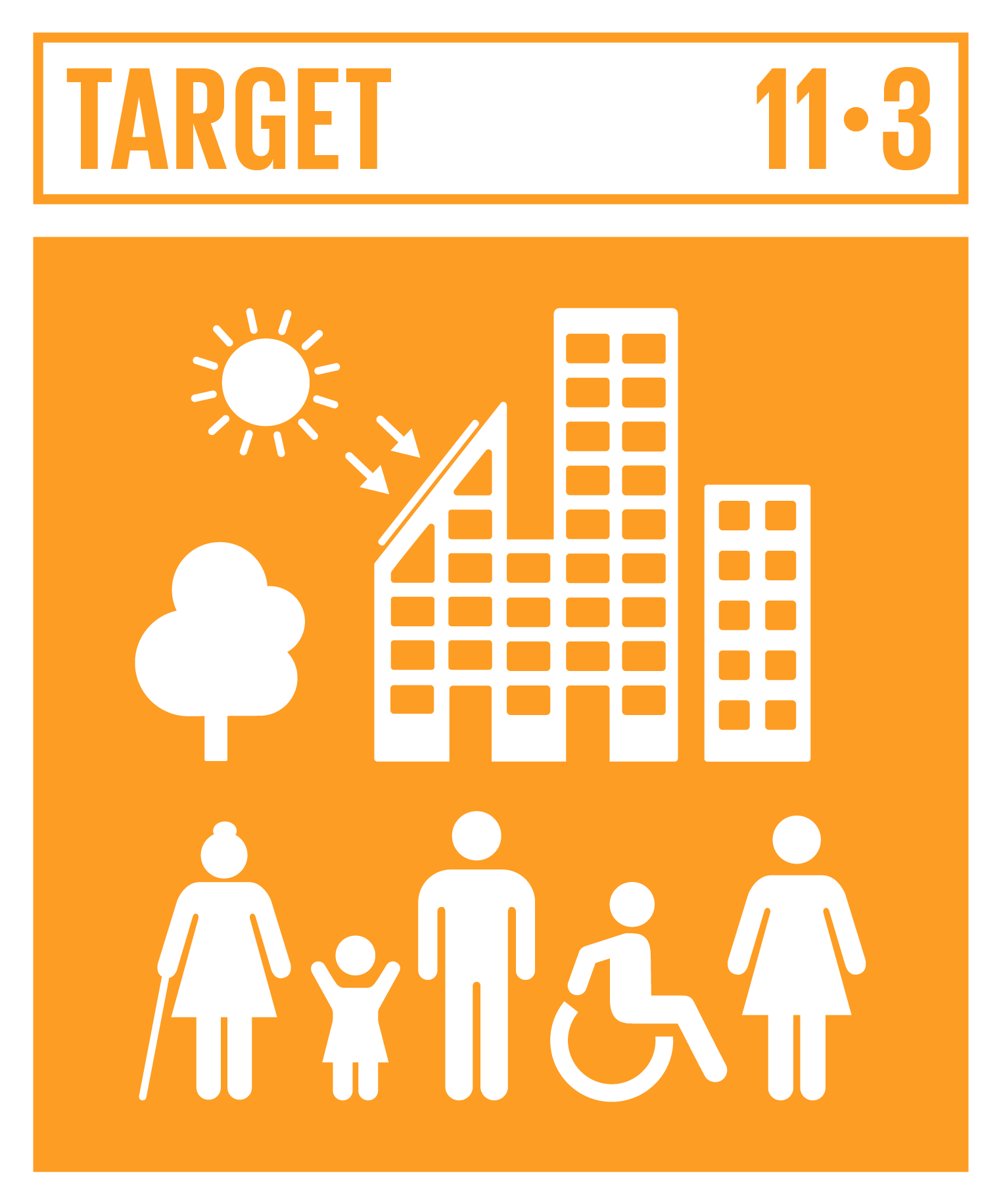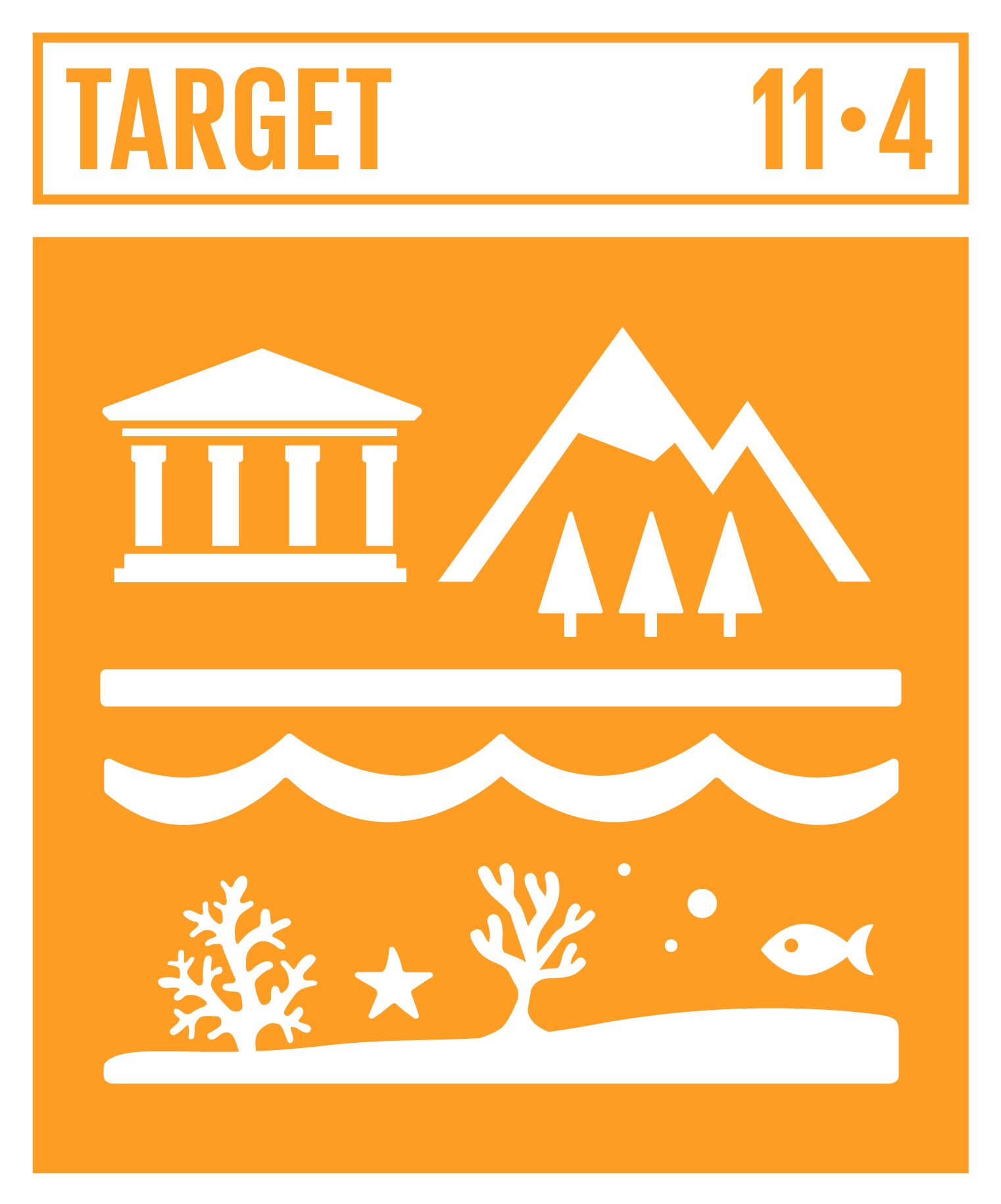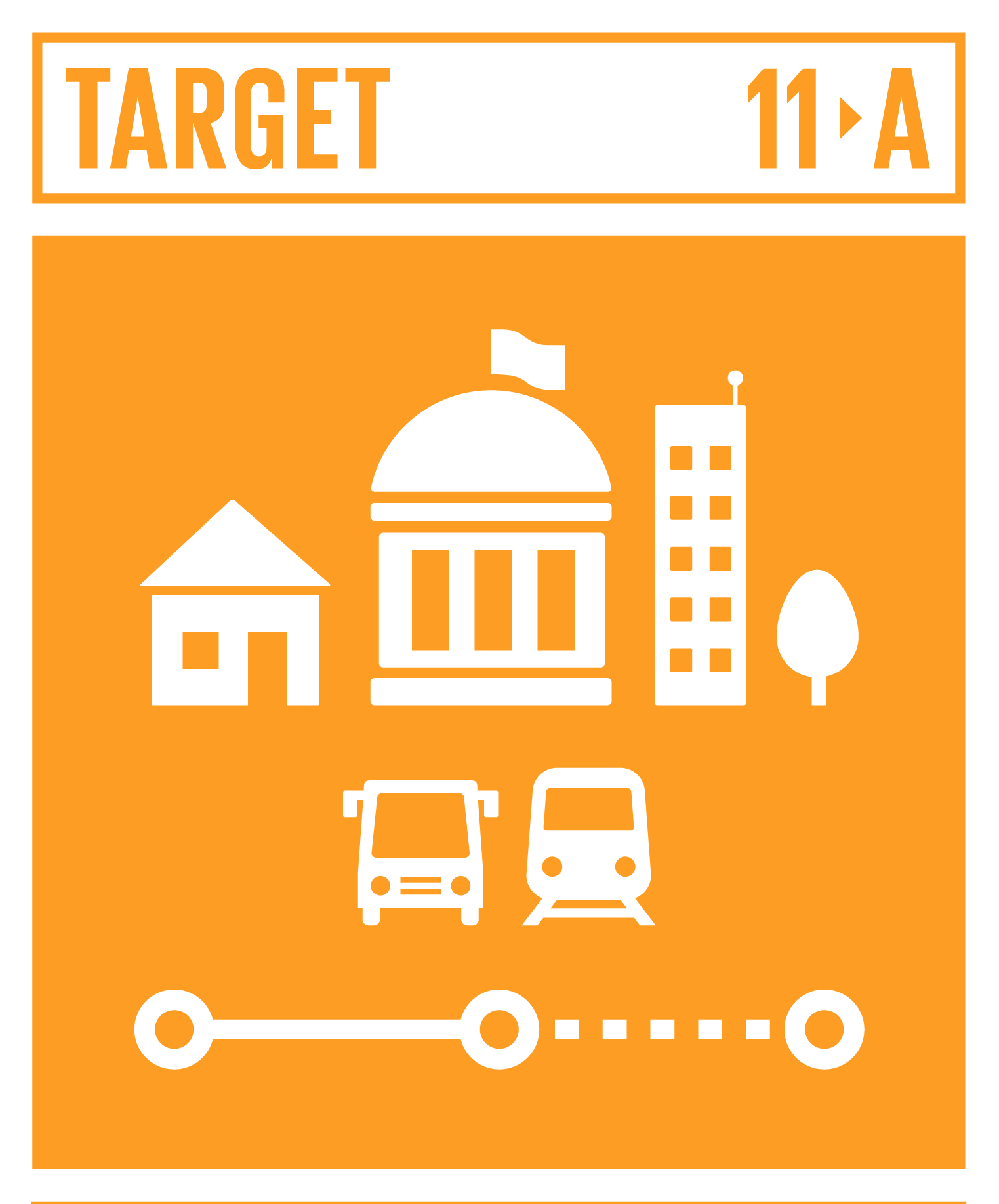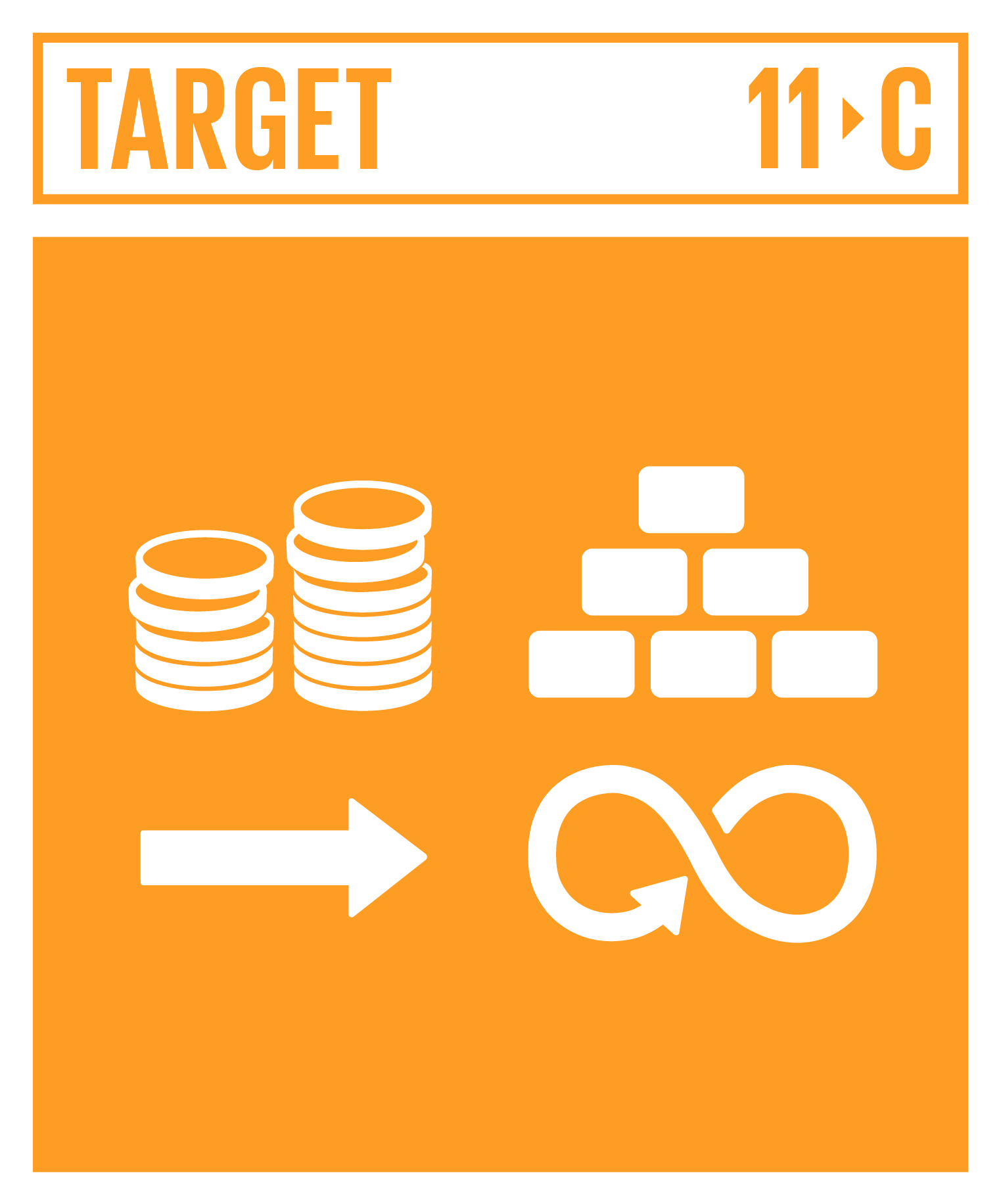Sustainable Development Goals
Targets and Indicators with Data Availability
Note: The data may be updated periodically as more information become available.
 |
Safe and Affordable Housing
By 2030, ensure access for all to adequate, safe and affordable housing and basic services and upgrade slums.
|
Indicator 11.1.1 | Proportion of urban population living in slums, informal settlements or inadequate housing
|
(a) Proportion of urban population living in slums is 0% as Singapore does not have any slums.
(b) Close to 80% of Singapore’s resident population live in public housing flats and the vast majority own their flats. There are also macroprudential safeguards in place for the purchase of public housing e.g. Mortgage loans for public housing are capped at 30% of a borrower’s gross monthly income.
|
 |
 |
Affordable and Sustainable Transport Systems
By 2030, provide access to safe, affordable, accessible and sustainable transport systems for all, improving road safety, notably by expanding public transport, with special attention to the needs of those in vulnerable situations, women, children, persons with disabilities and older persons.
|
Indicator 11.2.1 | Proportion of population that has convenient access to public transport, by sex, age and persons with disabilities
|
Almost 100% of Singapore’s population lives within 500m of a public transport stop.
|
 |
 |
Inclusive and Sustainable Urbanization
By 2030, enhance inclusive and sustainable urbanization and capacity for participatory, integrated and sustainable human settlement planning and management in all countries.
|
Indicator 11.3.1 | Ratio of land consumption rate to population growth rate
|
Singapore is a city state that is already highly urbanised. Beyond supporting population growth, land is also used for a variety of strategic objectives, such as national defence and economic trade. Singapore takes a long-term approach towards land use planning to ensure that we have sufficient land to grow sustainably to meet our present and future needs, and provide a high-quality living environment for all Singaporeans. Singapore's development is guided by the Long-Term Plan and the Master Plan where we have balanced different competing needs to achieve sustainable development economically, socially, and environmentally. We constantly find ways to optimise our land through building higher, co-locating uses and recycling land for redevelopment as leases expire so that we can set aside land and space for parks, nature areas and nature reserves. We also set aside land for strategic reserves to meet unanticipated needs.
|
Indicator 11.3.2 | Proportion of cities with a direct participation structure of civil society in urban planning and management that operate regularly and democratically
|
Public consultation is an integral part of planning for Singapore and involves consulting our local grassroots, stakeholders and communities on improvements that they would like to see in their living environment.
The Urban Redevelopment Authority (URA), Singapore's national land use planning and conservation agency, works closely with both the public and other Government agencies when it reviews and draws up the Long-Term Plan and Master Plan. The Long-Term Plan sets out broad development strategies over 50 years and beyond. The Master Plan is the statutory land use plan, which guides Singapore's development in the medium term over the next 10 to 15 years. Both plans are reviewed regularly taking into account changing needs and trends. Please refer to URA's website to learn more about public engagement for the Long-Term Plan Review and Draft Master Plan 2025.
|
|
 |
Protect the World's Cultural and Natural Heritage
Strengthen efforts to protect and safeguard the world’s cultural and natural heritage.
|
Indicator 11.4.1 | Total per capita expenditure on the preservation, protection and conservation of all cultural and natural heritage, by source of funding (public, private), type of heritage (cultural, natural) and level of government (national, regional, and local/municipal)
|
(a) Guided by the national strategic masterplan Our SG Heritage Plan, the National Heritage Board administers various initiatives to safeguard and promote Singapore’s cultural heritage, including the preservation of Singapore’s national monuments and first UNESCO World Heritage Site, and the management of the national inventory of intangible cultural heritage and national museums. In addition, the Urban Redevelopment Authority has developed policies, incentives, and guidelines to facilitate building conservations by building owners.
(b) Although Singapore is a small island city state with one of the highest population densities in the world, it is a home to rich biodiversity and ecosystems that span a whole range of natural habitats such as primary dryland forest, tall secondary forest, freshwater swamps, rocky shores, mangroves, mudflats, seagrass beds and coral reefs. Singapore's efforts on biodiversity conservation to retain natural areas while integrating biodiversity into the urban environment as much as possible, are guided through the implementation of key strategies, including the National Biodiversity Strategy and Action Plan (2009, updated with national targets in 2019), the Nature Conservation Masterplan (2015), and the City in Nature vision (2020).
|
 |
Reduce the Adverse Effects of Natural Disasters
By 2030, significantly reduce the number of deaths and the number of people affected and substantially decrease the direct economic losses relative to global gross domestic product caused by disasters, including water-related disasters, with a focus on protecting the poor and people in vulnerable situations.
|
Indicator 11.5.1 | Number of deaths, missing persons and directly affected persons attributed to disasters per 100,000 population
|

Singapore is not prone to natural disasters.
|
|
 |
Indicator 11.5.2 | Direct economic loss attributed to disasters in relation to global gross domestic product (GDP)
|
Singapore is not prone to natural disasters, and hence data on direct economic loss attributed to natural disasters is nil or negligible.
|
|
Indicator 11.5.3 | (a) Damage to critical infrastructure and (b) number of disruptions to basic services, attributed to disasters
|
Singapore is not prone to natural disasters, and hence data on damage to critical infrastructure and number of disruptions to basic services attributed to natural disasters is nil or negligible.
|
|
 |
Reduce the Environmental Impact of Cities
By 2030, reduce the adverse per capita environmental impact of cities, including by paying special attention to air quality and municipal and other waste management.
|
Indicator 11.6.1 | Proportion of municipal solid waste collected and managed in controlled facilities out of total municipal waste generated, by cities
|
Proportion of solid waste collected and managed in authorised facilities out of total waste generated by Singapore is 100% for the data time period since before 2000.
|
|
 |
Indicator 11.6.2 | Annual mean levels of fine particulate matter (e.g. PM2.5 and PM10) in cities (population weighted)
 |
Provide Access to Safe and Inclusive Green and Public Places
By 2030, provide universal access to safe, inclusive and accessible, green and public spaces, in particular for women and children, older persons and persons with disabilities.
|
Indicator 11.7.1 | Average share of the built-up area of cities that is open space for public use for all, by sex, age and persons with disabilities
|
Although Singapore does not track this indicator, we track the proportion of households within a 10-minute walk (400m) of a park to measure accessibility to green or open spaces and to facilitate the planning of parks. Under our City in Nature vision, Singapore aims to achieve 100% by 2030. As of 2024, we have achieved 95%.
|
|
Indicator 11.7.2 | Proportion of persons victim of non-sexual or sexual harassment, by sex, age, disability status and place of occurrence, in the previous 12 months
 |
Strong National and Regional Development Planning
Support positive economic, social and environmental links between urban, peri-urban and rural areas by strengthening national and regional development planning.
|
Indicator 11.A.1 | Number of countries that have national urban policies or regional development plans that (a) respond to population dynamics; (b) ensure balanced territorial development; and (c) increase local fiscal space
|
Singapore's land use plans take into account major land needs and trends in our local and global environment, including population dynamics and balanced territorial development. The two key plans that guide our urban development are the Long-Term Plan which maps out strategic land uses and infrastructure needs over 50 years and beyond, and the Master Plan which translates development strategies into detailed plans to guide the development of land and property in the nearer term.
Plans are regularly reviewed to allow us to cater for a range of possibilities, taking into account evolving factors that affect the built environment – including social, demographic, technological and environmental trends, the global environment, as well as the changing needs of Singaporeans.
|
 |
Implement Policies for Inclusion, Resource Efficiency and Disaster Risk Reduction
By 2020, substantially increase the number of cities and human settlements adopting and implementing integrated policies and plans towards inclusion, resource efficiency, mitigation and adaptation to climate change, resilience to disasters, and develop and implement, in line with the Sendai Framework for Disaster Risk Reduction 2015–2030, holistic disaster risk management at all levels.
|
Indicator 11.B.1 | Number of countries that adopt and implement national disaster risk reduction strategies in line with the Sendai Framework for Disaster Risk Reduction 2015–2030
|
As a city state, Singapore’s government carries out both national and local functions. Singapore is not prone to natural disasters and therefore does not systematically follow the Sendai Framework for Disaster Risk Reduction 2015-2030. Nevertheless, in areas covered by the Sendai Framework, we have invested in and implemented strategies such as fire safety regulations, public warning systems, community engagement and the use of technology to prevent disasters and risks and improve emergency response.
|
|
 |
Indicator 11.B.2 | Proportion of local governments that adopt and implement local disaster risk reduction strategies in line with national disaster risk reduction strategies
|
As a city state, Singapore’s government carries out both national and local functions. Singapore is not prone to natural disasters and therefore does not systematically follow the Sendai Framework for Disaster Risk Reduction 2015-2030. Nevertheless, in areas covered by the Sendai Framework, we have invested in and implemented strategies such as fire safety regulations, public warning systems, community engagement and the use of technology to prevent disasters and risks and improve emergency response.
|
|
 |
 |
Support Least Developed Countries in Sustainable and Resilient Building
Support least developed countries, including through financial and technical assistance, in building sustainable and resilient buildings utilizing local materials.
|
Indicator 11.C.1 | Total official development assistance and other official flows in support of urban infrastructure or urban infrastructure projects, by sector
|
Not applicable. Singapore does not receive Official Development Assistance.
|